What is selvedge denim? Is it different than raw denim? Here’s everything you need to know.
Vintage ←→ Modern
Pristine ←→ Workhorse
Classic ←→ Fashion Forward
While it appears that these word pairs are diametrically opposed, all of them describe raw, selvedge jeans.
These are the original (and still classic) jeans. They are the epitome of the adage that “everything old is new again”.
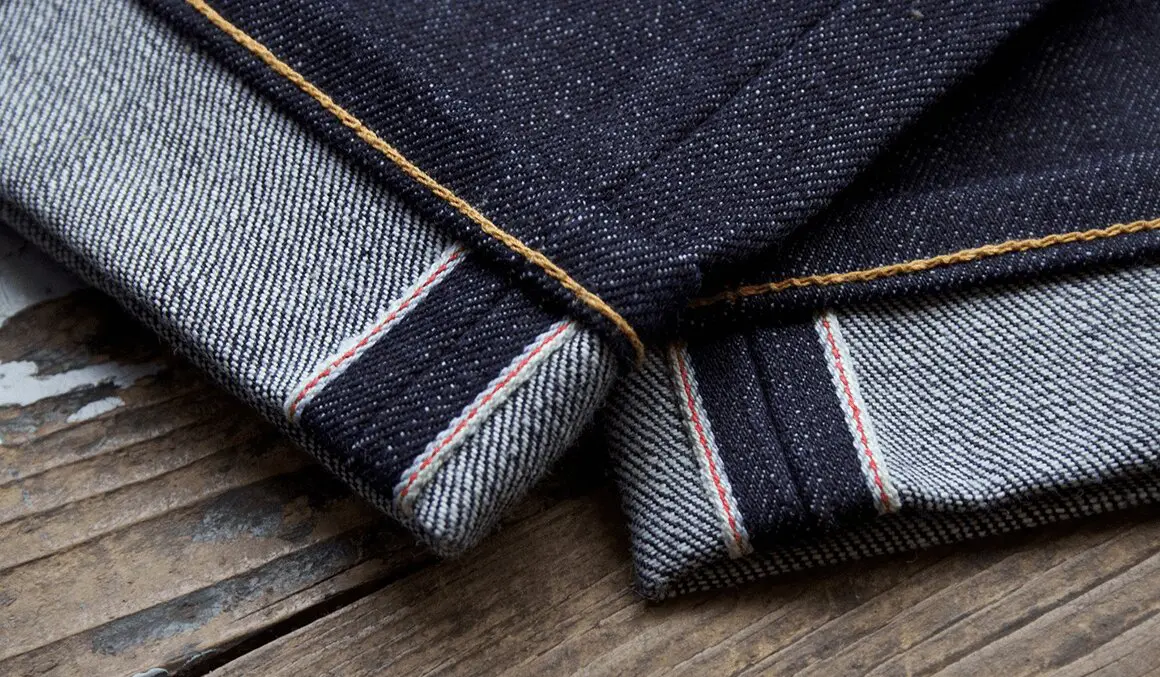
While denim has been as susceptible to fads and trends as any other clothing (remember acid-washed, patchwork and leisure suits), selvedge and raw denim have again become fashionable.
When you see crisp, dark jeans with a rolled cuff that has a white stripe (with possibly just a thread of color) at the finished edge you know you are looking at a new pair of raw selvedge denim.
Conversely, when you see jeans with great character and amazing fade marks in all the right places, they might be that same pair of well-loved jeans, just many years of hard wear down the road.
What Is Selvedge Denim?
It all starts with the fabric and how it’s produced.
Selvedge, also known as “self-edge”, describes the finished borders on the outside edges of fabric yardage. The loom and weaving process used to create a tightly woven band that not only prevents the fabric from unraveling but creates a clean, finished look – perfect for rolled cuffs.
Traditionally, all denim was woven on a shuttle loom that was 36” wide and included selvedge borders. A bit of easy technical loom explanation is necessary to understand the beauty of selvedge denim.
Fabric is created out of vertical “warp” threads and horizontal “weft” threads. A shuttle, a small wooden device containing weft yarn, is passed over and under warp threads to create the fabric.

When the shuttle reaches the end of the row of warp threads it’s turned and passed back through to create the next row and a sealed edge. The weft in a length of fabric is a single continuous thread.
Prior to the 1950’s, shuttle looms were the norm. However, with the increased popularity of denim, the projectile loom was drafted into use.
They are at least 60 inches wide (twice the shuttle loom), and the shuttle is replaced by a bullet-shaped projectile that quickly fires single weft yarns across the loom at a speed of more than 1000 per minute.
With 4 times the speed and double the width, output increased 10-15 fold.
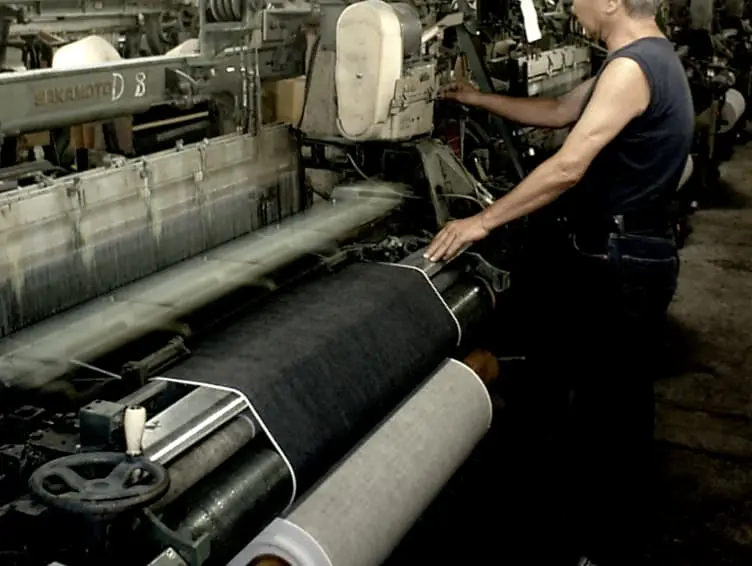
Completely machine-driven, the process is more efficient and allows for more reasonably priced, uniform denim.
Isn’t faster, newer technology always better? Not necessarily:
First, the weft yarns are not continuous, so a fringe, rather than a finished selvedge, is created at the edges of the fabric.
The second step of an overlock or cleaner stitch is needed to prevent fraying or unraveling.
Also, mass-produced denim is uniform and lacks the character possible with shuttle looms. The human factor and uniqueness are eliminated from the process.
Finally, denim from projectile looms is not as tightly woven as shuttle loom denim so there is a decrease in durability.
So the speed definitely comes with some drawbacks.
It’s About the Artistry
The artistry of selvedge denim production was never completely lost. Many of the looms were sold to Japanese manufacturers in the 1950’s to meet the post-World War II popularity of denim.
Japan was the perfect home for these looms because of its long tradition of fine textile making and indigo dying, as well as their appreciation of craftsmanship.
Shuttle looms are older and slower. They require more maintenance and constant supervision.
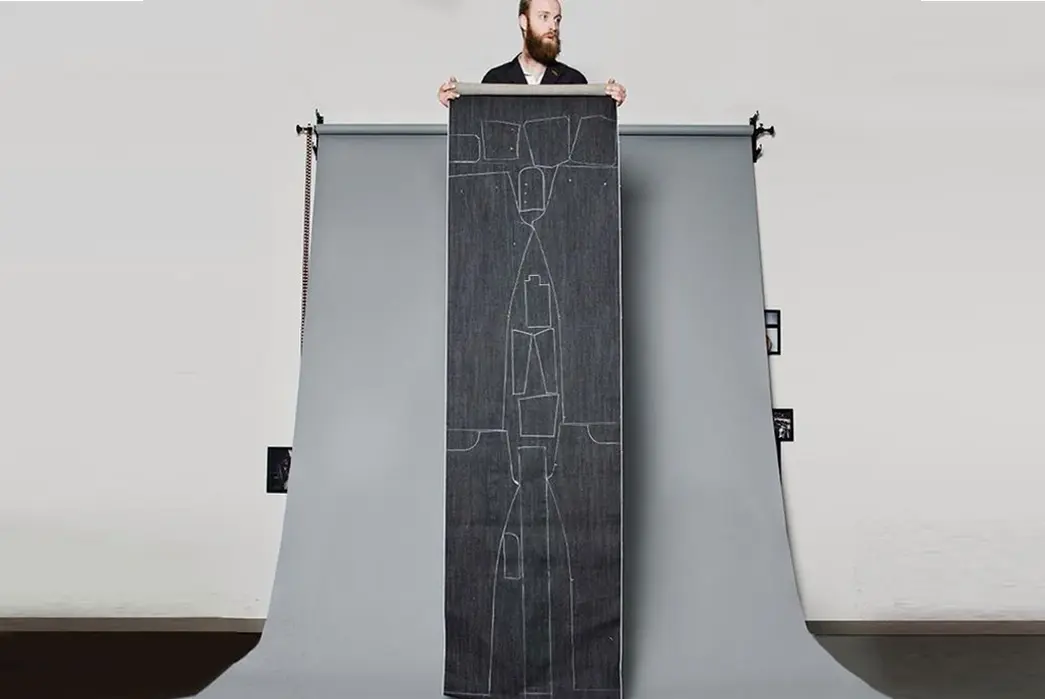
Instead of being a drawback, the manual nature of shuttle looms means that the skilled operators can manipulate the machine to produce a variety of textures and finished looks, in contrast to uniform, mass-produced denim.
Uneven textures can create slubby fabrics that look and feel like handwoven textiles. The finished product of shuttle denim is also softer. Today, Japan is the leader in fashionable selvedge denim.
Selvedge Denim Durability
Many people champion selvedge denim as being more durable. It is…because it is more tightly woven than projectile woven denim.
Also, the shuttle puts less stress on the yarn during weaving. Yes, the selvedge edge is sturdier than a frayed edge, but this only applies to the outer, side seam of the garment. All other edges in the garment still must be overlock stitched to prevent fraying.
One of the highlights of selvedge jeans is the clean look that you get when you cuff the jeans. The color thread is used by mills to identify which fashion house ordered the fabric.
For instance, Cone Mill’s White Oak Plant in North Carolina has been using shuttle looms to produce denim since the early 1900s.
They added a red stripe to differentiate the fabric it produced for Levi’s in 1915. These vintage jeans are still being produced today.
Denim for Lee’s jeans had a blue or green stripe, depending on style, while Wrangler’s had a yellow thread.
While selvedge denim is more labor-intensive and expensive to produce, there is still a worldwide demand for it. Japan is still the leader, with historic US mills producing the second most.
In addition to the higher cost of fabric production, selvedge manufacturers use better quality yarn and dye. Plus, the attention to detail given to things like pocket stitching zipper quality add to the expense.
These jeans were still a great value because of the superior end product.
Since China, India and Turkey have begun producing selvedge denim, manufacturing costs have decreased because they have lower labor costs.
This doesn’t always translate into lower-priced jeans (demand raises the price), but it does mean that you may want to be more mindful of where the fabric was produced if quality and sustainability are important to you.
Many popular brands – in addition to special edition Levi’s and Lee – such as Gap, Urban Outfitters and J. Crew offer selvedge jeans.
Even with all these options, Japan still offers the most fashion-forward choices.
What Is Raw Denim?
“Raw” or “dry” simply means fabric that hasn’t been washed prior to purchase. The denim is a uniform, deep indigo color with stiff, crisp edges.
The raw terminology refers only to the state of the fabric, and not what type of loom was used to produce it. You can have raw denim made on a projectile loom or selvedge denim that has been pre-washed and isn’t “raw”.
Raw ≠ Selvedge
Many people believe that raw denim, especially raw selvedge denim, honors the tradition and history of jeans. The practice of selling soft faded denim is relatively modern.
It’s undeniable that purchasing your jeans before they have been run through a couple of dozen cycles of an industrial washing machine, sandblasting or distressing does increase their life span.
Denim purists, or “denim-heads”, don’t respect the pre-made crease and fade marks that can be purchased because they aren’t an authentic representation of the owner.
Crease marks that hit mid-calf aren’t equal to those that should be behind the knee. Instead, they choose raw jeans whose patina will be unique to them.
Denim is unlike other fabrics – not because of the weave, but because of the yarn dying process. It all starts with an extremely tall machine that extends to the second floor of the factory.
Instead of soaking the yarn in a dye vat, warp threads for denim are suspended from the top of the machine and are repeatedly dipped into the indigo dye bath and then sent back to the top of the machine in a looping action.
This way the dye can oxidize while it adheres to the cotton yarn. This process doesn’t allow the dye to penetrate all the way through so the inner core remains white. Creases are formed when the outer indigo is washed or worn away, revealing the white center.
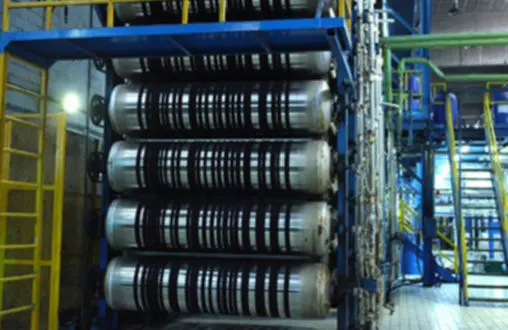
Raw denim is deeply colored and crisp – to the point of being stiff. Buying raw denim jeans can, however, present some challenges. First and foremost is finding the proper size.
Raw is not preshrunk, or “sanforized”. Instead of shrinking less than 1%, unsanforized jeans can shrink as much as 10% after the first washing.
You may need to purchase your raw jeans a size or two larger, depending on the manufacturer. Many use “vanity sizing” that doesn’t correlate to actual measurements; a 34 doesn’t always mean there is a 34” waist.
To ensure a proper fit, take your waist, inseam, outseam, hip, thigh and rise measurements. Many selvedge jeans offer skinny styles that don’t fit all thighs. You’re not too big, the pants are cut too narrow. Raw selvedge jeans aren’t offered everywhere.
You may have to rely on the internet to find a pair. Since you can’t try on numerous pairs as you would in a store, you may need to rely on the site’s measurement guides to find the right size – or order a couple sizes to try, and then return those that don’t fit.
Caring for Raw, Selvedge Jeans
Now that you’ve found a pair of raw selvedge jeans that fit, how do you care for them and create the perfect pair of jeans that will become your second skin for years to come?
It comes with work, patience and some effort. Your new jeans are going to be stiff for a long time!
After all, starch is applied to the yarn to add strength during the weaving process. The dye will bleed onto your skin, other clothing, and even furniture.
Never fear! The dye will stop coming off after a couple of weeks of persistent wearing, and certainly after the first wash or two.
This brings up a major question for raw denim wearers:
When should you wash your new jeans, and how should you wash them?
Washing Selvedge Denim
This actually isn’t an easy question to answer because there are many schools of thought.
The most hard-core enthusiasts say you should wait months, if not a year before you even think of washing, or that you should only wash them by walking into the ocean and letting them dry on your body.
This is certainly not practical for the overwhelming majority of people.
The reason why some people are so adamant about not washing raw jeans, especially early on, is that the longer you put off the first wash, the more deeply you will ingrain your body’s natural creasing, and the more stark and crisp the fade marks will be once you do wash them.
Enthusiasts are so serious about their raw jeans that they have created terms to describe their crease marks. “Whiskers” refers to the faded creases around the crotch, “honeycombs” develop behind the knees, thighs fade and anything consistently put into pockets will leave a white outline.
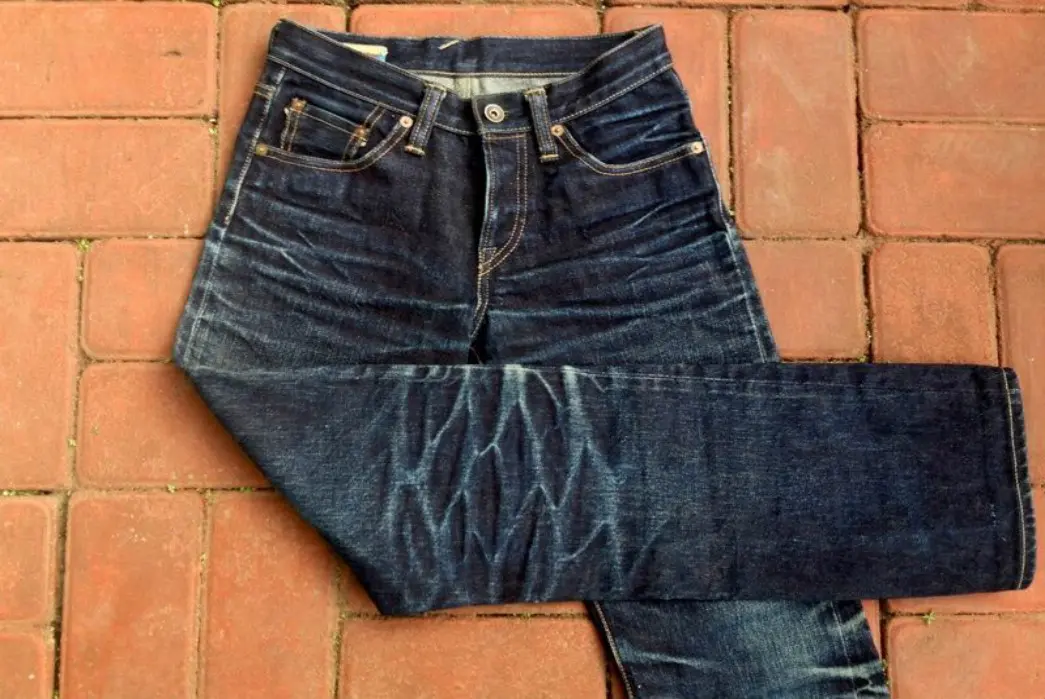
So just when and how should you wash your raw jeans? Again, there is no single best answer. In part, because it depends on how often you wear your jeans and how dirty they become.
While not universally accepted, it’s better to rinse or wash out dirt, sweat and oil because their accumulation is not only smelly, but actually weakens cotton fibers.
Most people agree that there are several practical steps you can take to prolong the raw denim appearance of your jeans:
- Turn your jeans inside out when washing.
- Use lukewarm to cool water with only a small of amount of mild detergent (like Woolite) in your bathtub.
- Soak your jeans for 45 minutes to an hour, gently scrubbing to remove specific dirt or grime.
- Rinse your jeans in cold water.
- Hang them outside (if possible) to line dry.
- If machine washing is necessary or preferred, use a gentle cycle and mild detergent.
If you actually want to fade your jeans a bit, use hotter water and more detergent. Washing more frequently and soon after purchase will result in a more uniform color.
Selvedge Innovations
If you are a fan of stretch jeans, after a great deal of experimentation, a Japanese manufacturer has developed a 360-degree stretch cotton, raw selvedge jean.
Jean makers have found other creative ways to use the selvedge in addition to the outseam.
For instance, it can be used as the top border of a pocket. Manufacturers who take the extra time and expense needed to use shuttle loom selvedge fabric for their jeans often focus more on the overall quality of every facet of the jean.
They may use copper nipple rivets on pocket corners and the base of the fly, first used by Jacob W. Davis in 1871, and commonly used on vintage Levi’s.
One final word of warning: because raw and selvedge jeans have become so popular, and are higher priced due to quality fabric and construction, some manufacturers have begun producing counterfeit “selvedge” jeans.
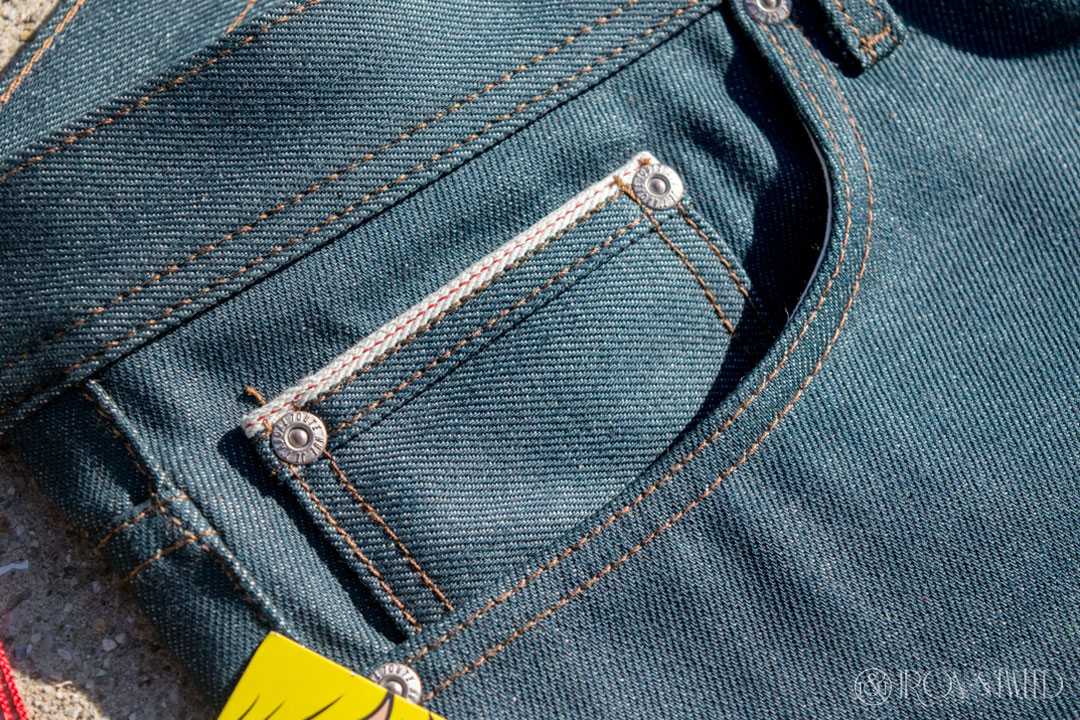
The signature edge may only extend part of the way up the outer seam of the pant. The fabric is actually projectile loom produced.
Beware of premium pricing on inferior goods!
USA vs. Japanese Denim
It’s possible to buy jeans made in the US using domestic selvedge denim. There are still a couple of manufacturers here producing high-quality selvedge denim on old shuttle looms.
However, Japan is still the leader in selvedge jeans, especially if you favor unique fabrics and innovative designs.
Is Selvedge for You?
If you are looking for classic, dress jeans, raw selvedge jeans are a great choice.
The bonus is that after years of hard use, you end up with a pair of jeans that authentically reflect your lifestyle and work patterns, and that feel like an old friend.

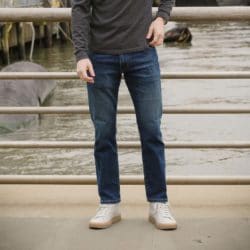

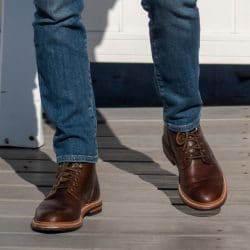
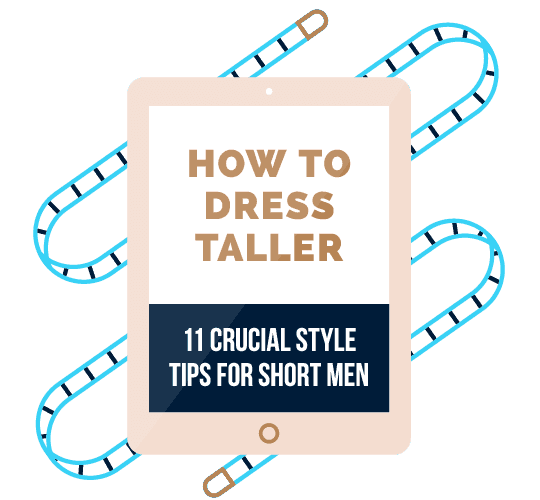

Hi! I appreciate your blog a lot, and often turn to it. I’m thinking of buying a pricey pair of selvedge jeans. Are there any companies that make them for short guys with short inseams? Or am I going to have to get them hemmed? Thanks! Wm.
Congratulations on your decision to enter the selvedge jean world. The most important measurement, aside from waist, is the rise. If you are shorter, a normal rise jean will come too high on your waist, or you’ll have to wear the jean lower down so you end of with a droopier than necessary bottom. Depending on your height and body type (long or short waisted), normally patterned jeans that assume a starting point of someone who is around 5’10” might fit you and you only have to worry about hemming the jeans.
One way to get a more perfect fit is to custom order your jeans. This doesn’t have to be more expensive, and you will get the proper rise for your body. Below are a couple manufacturers who have selvage denim and or made to measure or custom. I haven’t personally purchased from any of these companies, but it is a starting point.
– Make Your Own Jeans allows you to order made to measure jeans and they do offer selvedge fabric.
– iTailor offers a selvedge denim.
– Custom Made Jeans uses Candiani denim. I know they are a high-quality denim and they make a selvage option.
– Bespoke Tailors has selvage denim
You might also have some luck if you check the measurements of different manufacturers. Many of the more expensive selvage denims and jeans are Japanese and their sizing might be geared toward slightly shorter men.
– Momotaro has a slightly shorter rise than some US companies.
– Todd Shelton has a selvage denim and they offer lengths starting at 26″.
This is at least a place to start your journey. Good luck.